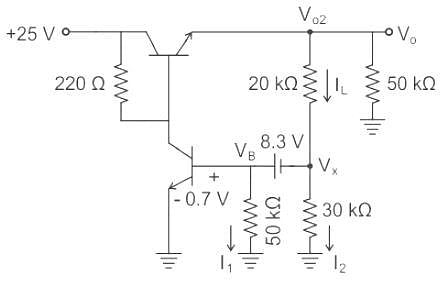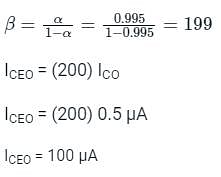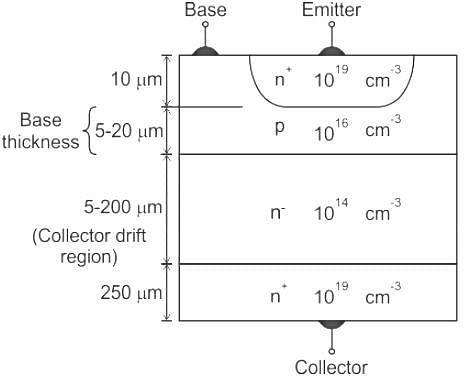Practice Questions: Bipolar Junction Transistor (BJT) - 1 - Electronics and Communication Engineering (ECE) MCQ
10 Questions MCQ Test Electronic Devices - Practice Questions: Bipolar Junction Transistor (BJT) - 1
In the series voltage regulator circuit as given in below figure, VBE = 0.7 V, β = 50, VZ = 8.3 V. The output voltage V0 is:


Considering adding impurities to semiconductors, what is the abbreviation for ‘ppm’?
| 1 Crore+ students have signed up on EduRev. Have you? Download the App |
Which of the following are the functions of a transistor?
A transistor connected in a common base configuration has the following readings IE = 2 mA and IB = 20 μA. Find the current gain α.
If α = 0.995, IE = 10 mA and ICO = 0.5 μA, then the value of ICEO is:
What is true with regard to the cut off region of npn BJT?
Four relations are given below. Identify the correct relation regarding a transistor.
The built-in potential of a P N junction diode is 0.7 V at room temperature. What will be the approximate value of built-in potential if the doping concentrations on both sides are doubled?
Assume In (2) = 0.7
A power transistor has:
|
21 docs|29 tests
|
|
21 docs|29 tests
|




























